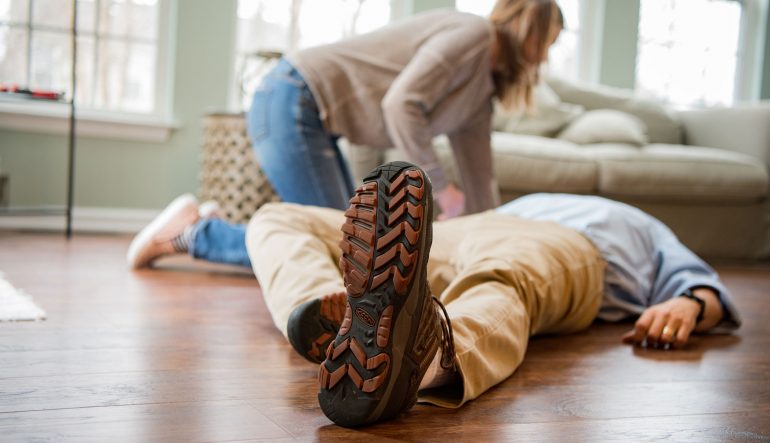Cardiac arrest isn’t someone else’s problem
A quick thought experiment: if you were to suffer a sudden cardiac arrest right now, is there anyone nearby who would know how to save your life?
For most of us, the answer would be no.
To survive, you would need to receive CPR and defibrillation within the first few minutes following your cardiac arrest.
This would require someone in your household or workplace being able to recognise what is happening, call emergency services, and start CPR. There would also need to be an AED (automated external defibrillator) nearby.
Those are a lot of stars that need to align. The fact that the out-of-hospital cardiac arrest survival rate is so low shows those stars don’t align very often.
We know AEDs are hard to find in an emergency. But CPR should be relatively easy to learn, right?
Yes, it is. But before you or I will commit to learning a new skill however, wouldn’t we want to know why it’s a skill we need?
Awareness saves lives
Do you know someone who has experienced a sudden cardiac arrest?
If you do, chances are you’re already more willing to be prepared to help the next time you encounter a cardiac arrest.
If and when that happens, the person you help will be far more likely to survive.
Cardiovascular disease is the leading cause of death worldwide. Cardiac arrest is a symptom of cardiovascular disease; it kills more people than cancer.
But, how would you know this, if you’ve never been exposed to the problem?
People not knowing about cardiac arrest, how to recognise it, and what they can do to help in an emergency, is the single biggest barrier to improving out-of-hospital cardiac arrest survival rates.
RELATED ARTICLE: Being ready to buy time
If knowing about the problem is the first step, the second is an active choice to do something about it.
Being part of the solution
Do you know CPR? If you do, you’re already prepared to help someone survive a cardiac arrest.
Knowing when to apply CPR, and how to perform it, is the cornerstone of cardiac arrest preparedness.
Higher rates of CPR training in communities was the foundation for Seattle becoming the world leader in citywide cardiac arrest survival rates.
Achieving this required a shared understanding of the personal responsibility each member of those communities had to be ready to intervene.
Each member of those communities had a choice on whether to commit themselves to being part of the solution.
Planning to help
Believing you have an opportunity to make a difference, and acknowledging the positive attitudes of the people around us toward that belief, are explained under the Theory of Planned Behaviour.
Under this theory, any one of us would choose to learn CPR because it will give us a chance to do good, and serve others. This starts with individuals recognising cardiac arrest isn’t someone else’s problem.
If enough of us choose to participate – as in Seattle – then our collective decisions create a public good, a service that benefits all members of society.
A spanner in these works however, is Perceived Behavioural Control. Under this theory, despite the fact that we value life and would want to help save lives, cardiac arrest could seem too big a problem to prepare for.
Monash University’s Brian Haskins suggests simplification holds a possible antidote to this problem.
According to Brian, if more of us knew how to recognise cardiac arrest, our communities would be much better prepared to respond effectively to sudden cardiac arrests in our homes, workplaces and neighbourhoods.
RELATED ARTICLE: Are you ready to help?



